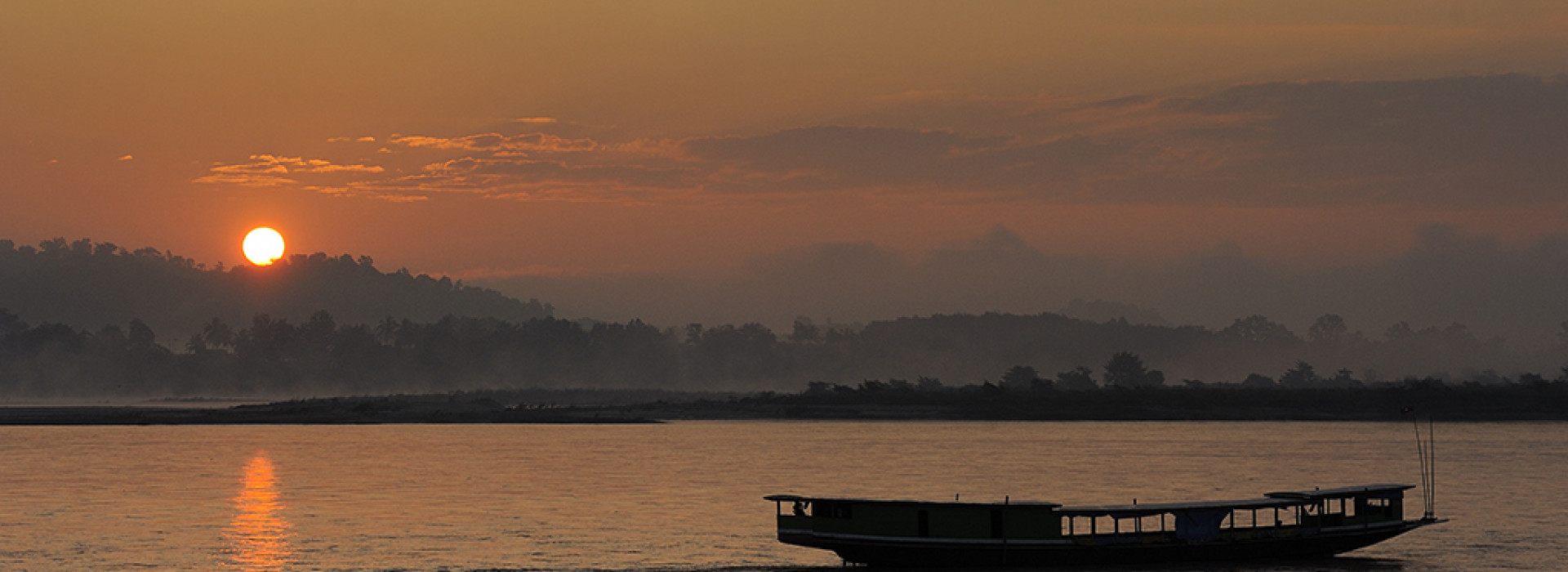Mekong water levels to decrease slightly, with some stations in Laos and Thailand to remain on flood alert
Vientiane, Lao PDR, 7 September 2018 – The Mekong River’s water levels will slightly decrease during the period 7 – 12 September, with an average drop between 0.01 and 0.11 meters at some stations along the mainstream. More stations in Lao PDR and Thailand than in others will remain on flood alert.
In the upper part of the basin from Chiang Saen of Thailand to the middle reaches in Vientiane of Lao PDR, there is an average decrease by about 0.13 meters during the monitoring period. In Vientiane, for example, the water level will drop slightly below its alarm level (11.50 meters), a situation when a flood level is forecast within the next three days. The current water level at the station is 11.10 meters.

Water level over the last seven days and the five-day forecast in Vientiane
In the middle reaches from Nongkhai of Thailand to Pakse of Lao PDR, the trend is also decreasing, with an average drop of about 0.16 meters. But seven stations out of eight will be either at their alarm stages – a situation where water levels range between alarm and flood levels – or at flood levels, a situation where water levels reach a full riverbank and overland flow of the low-lying area.
For example, in Nongkhai and Nakhon Phanom of Thailand, the water levels are now slightly above their flood levels. Although the current water levels (12.36 meters in Nongkhai and 12.39 in Nakhon Phanom) are expected to decrease by about 0.10 meters over the next three days, they are still above the stations’ flood levels of 12.20 meters in Nongkhai and 12.00 in Nakhon Phanom.

Water level over the last seven days and the five-day forecast in Nongkhai
Two other stations in Thailand – Mukdahan and Khong Chiam – are currently well within their alarm stages. Mukdahan’s water level today is 12.45 meters, or 0.45 meters higher than the station’s alarm level and only 0.05 meters lower than the flood level. Over the next three days, there is a slight decrease by about 0.15 meters in this station, but this remains within the alarm stage.
Khong Chiam, whose current water level is 13.95 meters, will experience a gradual decrease of the water level by about 0.50 meters over the next three days until it reaches a stable situation on 10 September. The station’s alarm level is 13.50 meters or one meter below the flood level.
Water levels in Paksane (14.27 meters), Thakhek (13.49 meters) and Pakse (11.46 meters) of Lao PDR today are also within their alarm stages. But with an average drop by about 0.15 meters over the next five days, Pakse’s water level is expected come to its normal condition on 12 September, while Paksane and Thakhek’s water levels will still be within their alarm stages though the trend is more stable.
In the lower reaches of the basin from Stung Treng to Prek Kdam of Cambodia, there is a slight decrease of the water levels too, with an average decline by about 0.12 meters over the monitoring period. But only one station, Koh Khel, out of the total eight is at its alarm stage.
The station’s current water level is 7.77 meters, which is 0.37 meters higher than the alarm level or 0.13 meters lower than the flood level. The water level is expected to be stable over this five-day period, with only about 0.10-meter drop on 12 September.

Water level over the last seven days and the five-day forecast in Koh Khel
In the lowest reaches of the basin in Tan Chau and Chau Doc of Viet Nam, the water levels are stable although the two stations are still standing at their alarm stages over this monitoring period.
Both alarm and flood levels are defined to predict possible danger. The Mekong River Commission’s member countries define their own flood levels. This means flood levels vary from one station or country to another.
During the flood season the MRC’s Regional Flood Management and Mitigation Center provides daily flood forecasting for 22 key stations along the Mekong mainstream from Chiang Sean of Thailand to Tan Chau and Chau Doc of Viet Nam. It also provides real-time information on warning for flash flood from rainfall events over a given duration, known as Flash Flood Guidance, over the lower Mekong countries, based on Satellite Rainfall Estimate, a global hydro-estimator satellite system.
The river forecast is usually made for a five-day period. Results from the forecast, including present water levels and additional flood information, are disseminated to different parties involved in flood and emergency management.
Information on flood forecasting and flash flood guidance can be accessed at: http://www.mrcmekong.org/. Information on water monitoring at the stations on the Mekong mainstream can also be accessed at: http://monitoring.mrcmekong.org/
-END-





